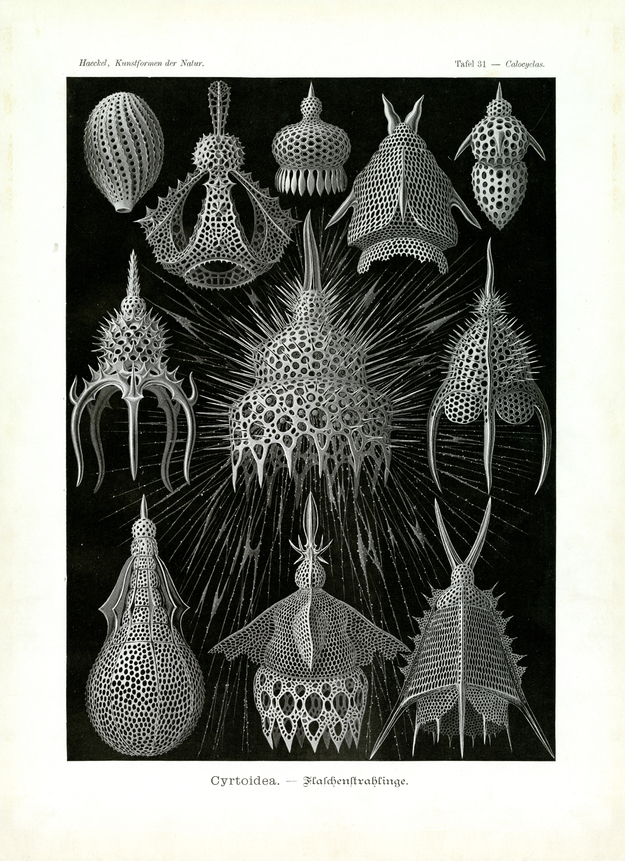Translation of the original German introduction by Ernst Haeckel:
Phylum of Protozoa (Urtiere); - class of Rhizopoda (Wurzelfüßer); - subclass of Radiolaria (Strahlinge); - legion of Nassellaria (Korbstrahlinge or Monopyleen); - order of Cyrtoidea (Flaschenstrahlinge).Illustrations of this plate present the lime skeletons of Cyrtoidea, the most varied order within the legion of Nassellaria; 160 kinds and more than 1200 species, most of them very small, invisible to the naked eye or appearing as a small dot only. Cyrtoidea are most closely related to Spyroidea presented on plate 22. The living soft body that lies within the lime shell (illustrated on plate 11) is a simple circular cell (ovoid, conical or elongated-round); the numerous delicate plasma threads that emanate from all over the central capsule are presented here only in fig 7; they build the delicate lime shell that is a distinguished feature of this order with an extraordinary variety and elegance of shell form and grill formation. The shell remains rarely one-chambered (Monocyrtida, fig. 1); usually one or two more chambers attach to the first chamber (double-chambered, Dicyrtida, fig. 2, 3; - tri-chambered, Tricyrtida, fig. 4-8). The first chamber (at the top) is called ‘small head’ (Cephalis), the second ‘chest cage’ (Thorax), the third ‘abdominal cage’ (Abdomen). In the multi-chambered shell (Polycyrtida) 4 – 8 or more (at times 10 – 20) chambers are placed one on top of the other (fig. 9, 11). Usually the ‘grill shell’ is ornamented with delicate appendices that serve as armor and hovering apparatuses (horns on the head, wings at the chest cage, feet at the abdominal cage).
Translation by VR Translators Bangalore
We've scanned the original lithography at 1200dpi on the Epson A3 scanner of A3 scanner huren. You can download a 400dpi JPEG here.
